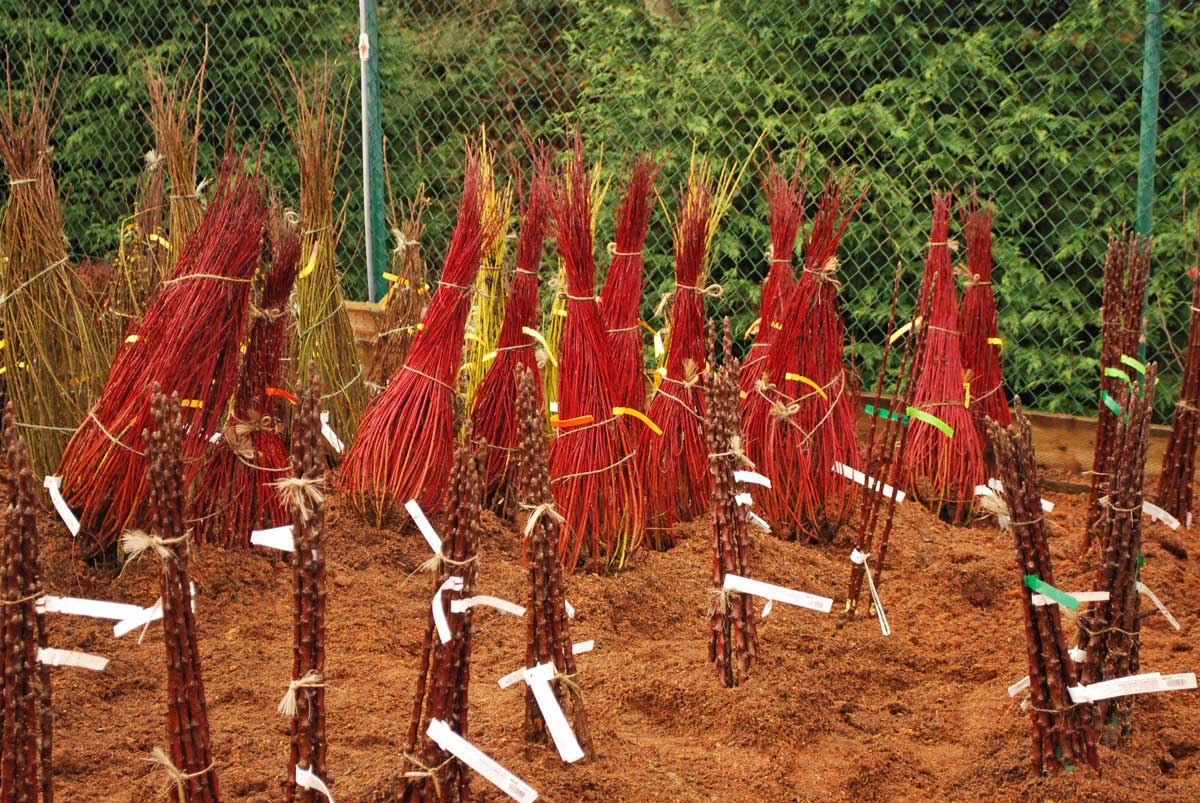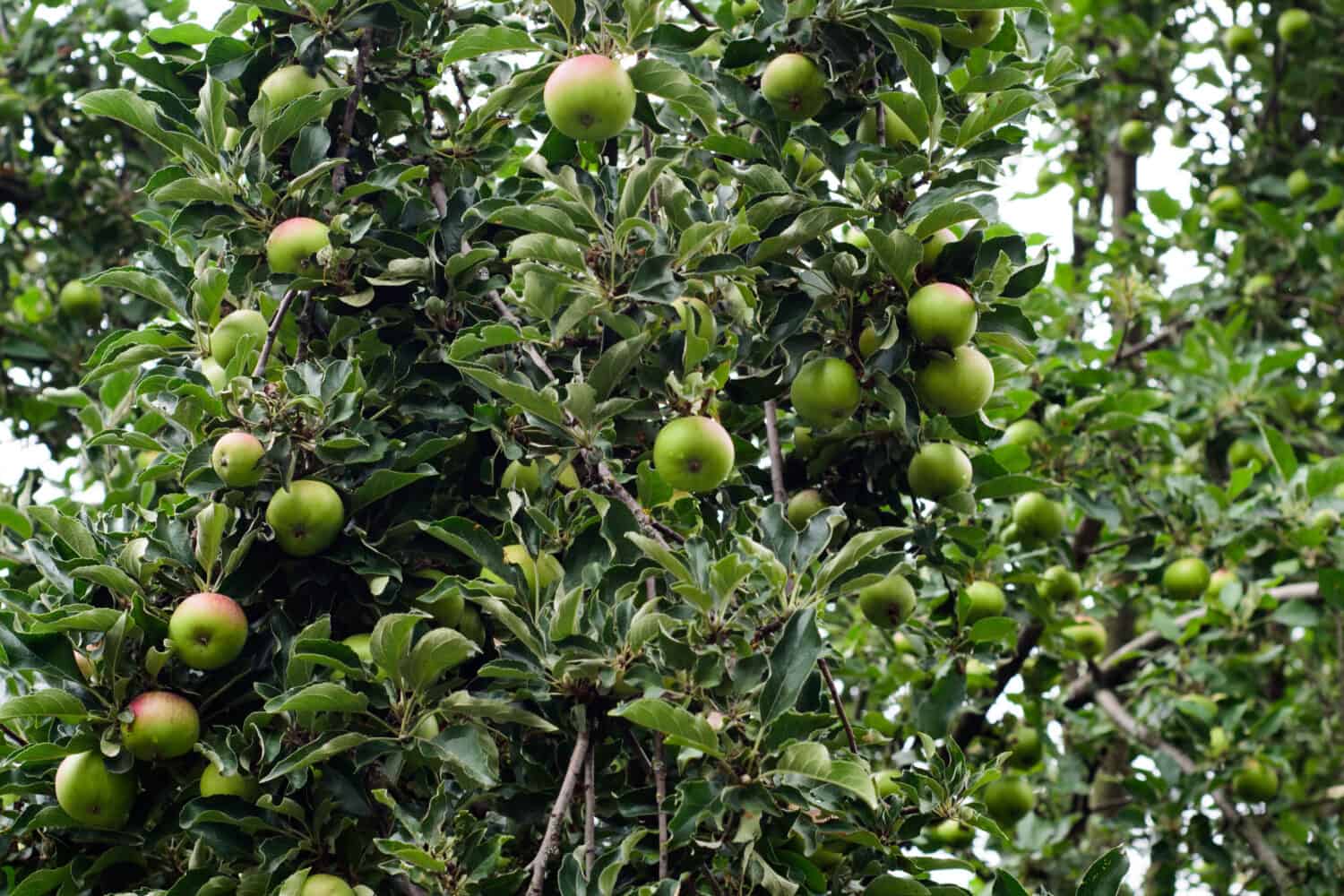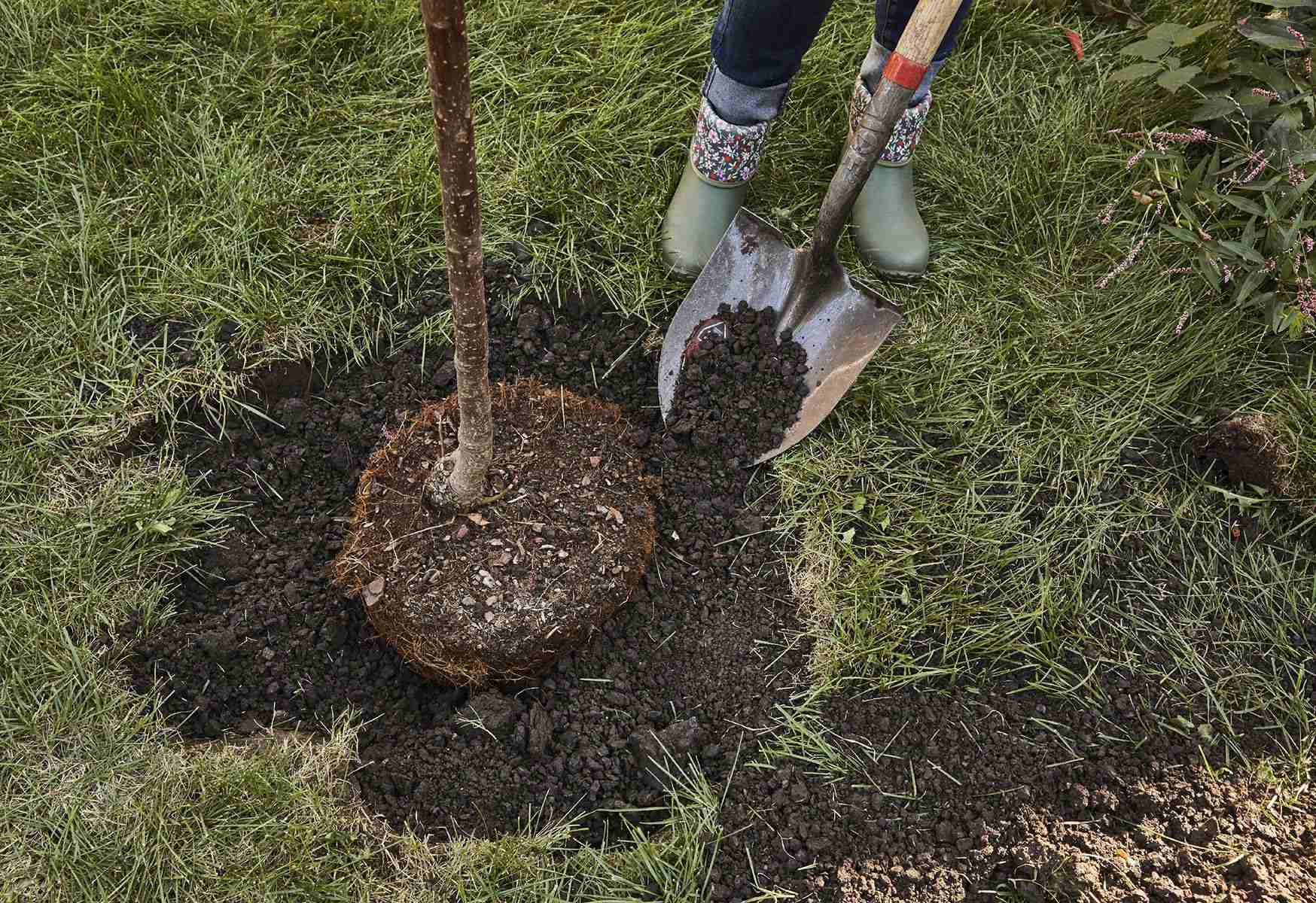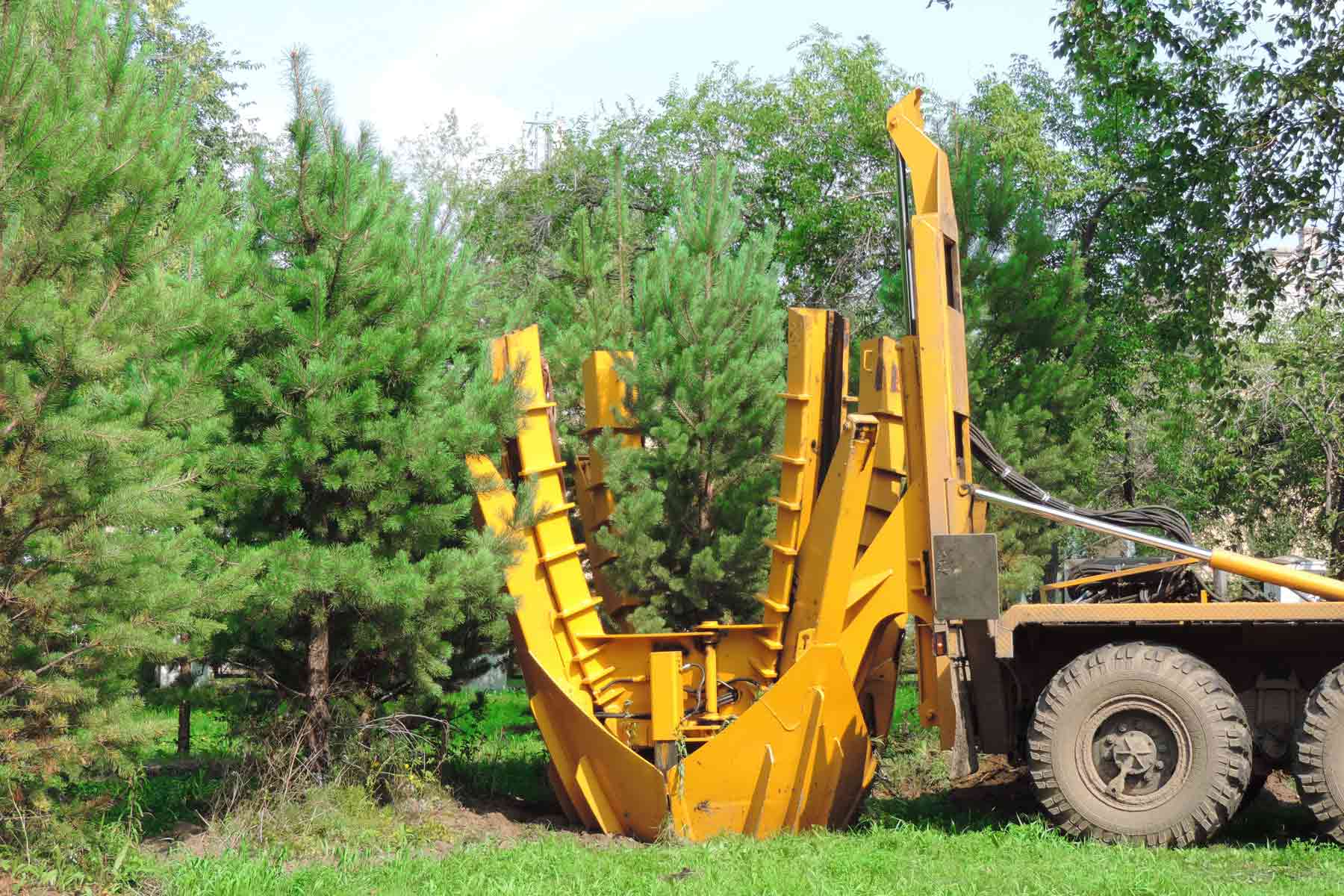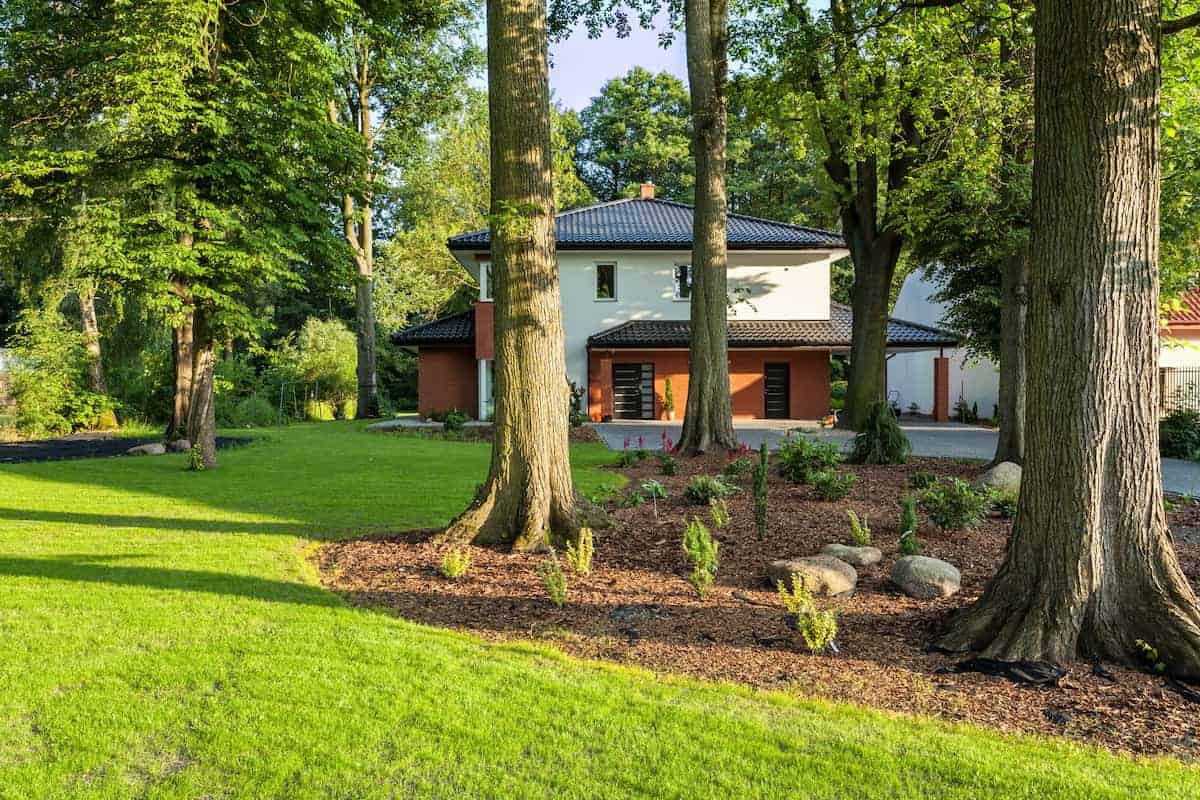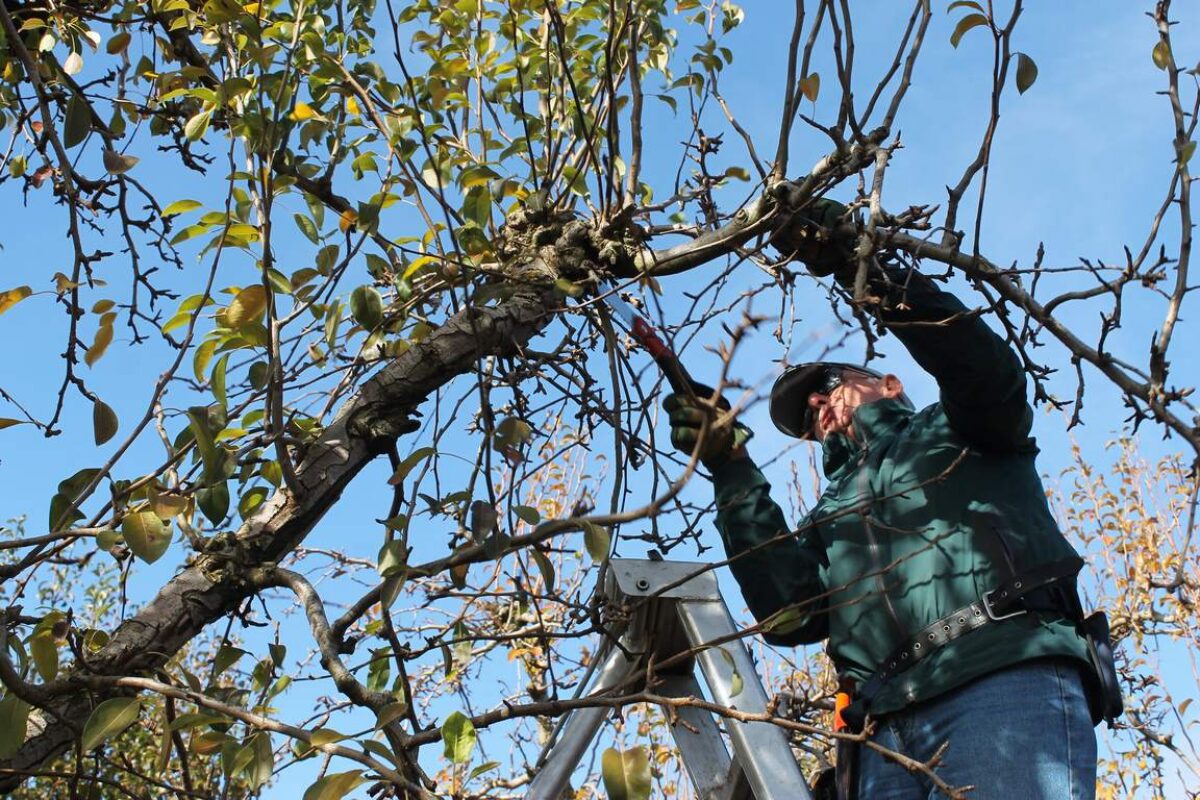Home>Gardening Techniques>Plant Care>When To Plant Crepe Myrtle Trees
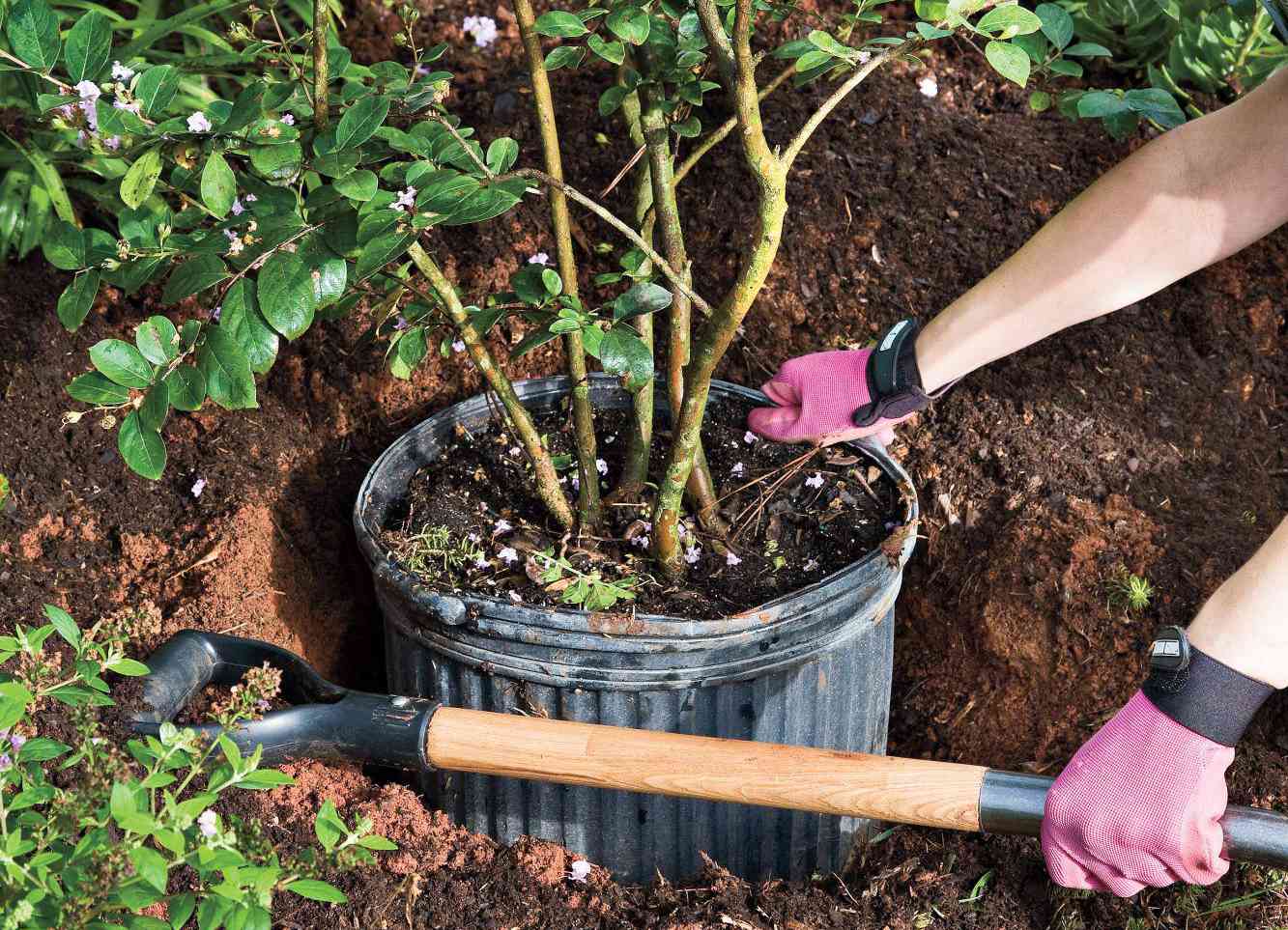

Plant Care
When To Plant Crepe Myrtle Trees
Modified: February 10, 2024
Learn how and when to plant crepe myrtle trees with our comprehensive plant care guide. Boost your garden's beauty with these stunning flowering trees.
(Many of the links in this article redirect to a specific reviewed product. Your purchase of these products through affiliate links helps to generate commission for Chicagolandgardening.com, at no extra cost. Learn more)
Table of Contents
- Introduction
- Factors to Consider Before Planting Crepe Myrtle Trees
- Best Time of Year to Plant Crepe Myrtle Trees
- Planting Locations for Crepe Myrtle Trees
- How to Prepare the Soil for Crepe Myrtle Planting
- Steps for Planting Crepe Myrtle Trees
- Caring for Newly Planted Crepe Myrtle Trees
- Common Mistakes to Avoid When Planting Crepe Myrtle Trees
- Conclusion
Introduction
Welcome to the world of crepe myrtle trees! These beautiful, flowering trees are a popular choice for landscaping and adding beauty to gardens and outdoor spaces. If you’re considering planting a crepe myrtle tree, you’re in for a treat. In this article, we’ll guide you through the process of planting and caring for these stunning trees.
Crepe myrtles (Lagerstroemia) are known for their vibrant, show-stopping blooms that burst forth in a variety of colors, including shades of pink, purple, red, and white. They are native to Asia and are widely cultivated for their attractive flowers, graceful form, and year-round interest.
Before diving into the details of when and how to plant crepe myrtle trees, it is essential to understand the factors to consider when making your planting decisions. These factors include the climate and region where you live, the size and type of the tree, and the desired location within your yard or garden.
Crepe myrtle trees come in various sizes, ranging from dwarf varieties that reach only a few feet tall to larger trees that can grow up to 30 feet. Therefore, it is crucial to choose a tree that suits your specific space and landscaping goals. Additionally, considering the soil condition, sun exposure, and water availability in your chosen location will help ensure the tree thrives and adds beauty to your outdoor space.
One of the key elements to keep in mind when planting crepe myrtle trees is the timing. Choosing the right time of year to plant ensures that the tree has the best chance of establishing a strong root system and flourishing in the long run. In the next section, we will delve deeper into the best time of year for planting crepe myrtle trees.
Factors to Consider Before Planting Crepe Myrtle Trees
Before jumping into the planting process, it is crucial to take several factors into consideration to ensure the success of your crepe myrtle tree. These factors include your climate, the size and type of tree, and the location within your yard or garden.
First and foremost, consider your climate and region. Crepe myrtles thrive in warm, sunny climates, making them an excellent choice for southern and coastal areas. They prefer full sun exposure and can withstand high temperatures and humidity. However, if you live in a colder climate, you may need to select a cold-hardy variety or consider container gardening, allowing you to bring the tree indoors during the winter months.
The next factor to ponder is the size and type of crepe myrtle tree you wish to plant. Crepe myrtles come in various sizes, including dwarf, small, medium, and large varieties. Consider the available space in your yard and choose a tree that fits your desired height and spread. Also, take into account the mature size of the tree, as it is essential to give it enough space to grow and flourish without overcrowding nearby plants or structures.
Furthermore, think about the location within your yard or garden. Crepe myrtles prefer well-draining soil, so ensure the chosen area receives good air circulation and is not prone to standing water. They also thrive in areas with fertile, slightly acidic soil. If your soil is heavy clay or sandy, amending it with organic matter like compost can improve drainage and nutrient content.
Consider the amount of sunlight the location receives throughout the day. Crepe myrtles require full sun exposure, meaning they should receive at least six to eight hours of direct sunlight daily. If the chosen area is shaded for a significant portion of the day, it may not be suitable for crepe myrtle growth and blooming.
Lastly, evaluate the proximity to other plants and structures. Crepe myrtles have an appealing, branching structure, so give them ample space to showcase their natural beauty. Avoid planting them too close to buildings, fences, or other trees that may hinder their growth or cause physical damage.
By considering these factors before planting, you will ensure that your crepe myrtle tree is positioned for optimal growth and beauty. In the next section, we will discuss the best time of year to plant your crepe myrtle trees.
Best Time of Year to Plant Crepe Myrtle Trees
Choosing the right time of year to plant your crepe myrtle tree is crucial for its overall health and long-term success. While they can be planted at different times throughout the year, there are certain seasons that are more favorable for optimal growth and establishment.
Spring and early fall are considered the best seasons to plant crepe myrtle trees. These times of the year provide the ideal conditions for root development and tree establishment. In regions with mild climates, where winter temperatures do not fall below freezing, early spring is an excellent time to plant crepe myrtles. The soil is beginning to warm up, and the tree has ample time to establish its root system before the hot summer months.
If you’re in an area where summers are scorching hot, planting in early fall is a great option. The cooler temperatures and more moderate weather allow the tree to establish its roots before winter sets in. By the time spring arrives, the crepe myrtle tree will be ready to flourish and showcase its beautiful blooms.
While it is possible to plant crepe myrtle trees during the summer or late fall, it may require extra care and attention to ensure the tree’s survival. Planting during the summer months exposes the young tree to high temperatures and potential heat stress. It’s essential to water the tree regularly and provide shade during the hottest parts of the day. Late fall planting runs the risk of colder temperatures and frost, which can damage the tree before it has a chance to establish its roots.
Regardless of the season you choose to plant, it’s crucial to monitor the tree’s water needs carefully. Newly planted crepe myrtle trees require regular watering, especially during the first year when their root systems are still developing. Water deeply but infrequently to encourage deep root growth. Applying a layer of organic mulch around the base of the tree can help retain moisture and regulate soil temperature.
In summary, the best time of year to plant crepe myrtle trees is in the spring or early fall. These seasons provide optimal conditions for root establishment and growth. If you opt for summer or late fall planting, be prepared to provide extra care and monitor the tree’s water needs closely. By choosing the right time to plant, you’re setting your crepe myrtle tree up for success and ensuring it thrives for years to come.
Planting Locations for Crepe Myrtle Trees
Choosing the right planting location for your crepe myrtle tree is crucial for its health, growth, and overall aesthetic appeal. Here are some key factors to consider when selecting the perfect spot:
Sunlight: Crepe myrtle trees thrive in full sun, so choose a location that receives at least six to eight hours of direct sunlight per day. Without enough sunlight, the tree may not bloom as abundantly or grow as vigorously.
Soil Drainage: Good soil drainage is essential for the health of crepe myrtle trees. They prefer well-drained soil and are not tolerant of standing water. Avoid planting in areas prone to flooding or where water tends to collect after heavy rainfall.
Soil Quality: Crepe myrtles prefer slightly acidic to neutral soil with good fertility. Before planting, test your soil’s pH and nutrient levels. If the soil is acidic, you can add lime to raise the pH. If it is alkaline, you can amend it with compost or other organic matter to improve its fertility and moisture retention.
Space: Consider the mature size of the crepe myrtle tree and ensure it has enough space to grow and spread without being crowded by other plants or structures. Planting too close to buildings can impede airflow and cause damage to both the tree and the structure.
Aesthetics: Crepe myrtle trees are known for their stunning blooms and graceful branches. Choose a location where the tree can be a focal point or add beauty to the landscape. Consider its surroundings, including neighboring plants and other landscape features, to create a visually pleasing and harmonious design.
Wind Exposure: While crepe myrtle trees can tolerate some wind, it’s best to avoid planting them in extremely windy locations. Strong winds can damage the delicate branches and compromise the tree’s overall health and appearance.
Keep in mind that some varieties of crepe myrtle are more cold-sensitive than others. If you live in a region with harsh winters, choose a cold-hardy variety suited to your climate. Alternatively, you can grow crepe myrtle trees in containers and bring them indoors during the winter months to protect them from freezing temperatures.
By considering these factors and choosing a suitable planting location, you will provide your crepe myrtle tree with the best conditions to thrive, bloom beautifully, and enhance your outdoor space. In the next section, we will explore how to prepare the soil for planting crepe myrtle trees.
How to Prepare the Soil for Crepe Myrtle Planting
Proper soil preparation is essential to ensure the healthy growth and establishment of your crepe myrtle tree. By taking the time to prepare the soil before planting, you can provide the necessary nutrients and optimal conditions for your tree to flourish. Here are the steps to prepare the soil for crepe myrtle planting:
1. Test the Soil: Before making any amendments, it’s essential to test the soil pH and nutrient levels. You can find soil testing kits at your local garden center or send a soil sample to a laboratory for analysis. Testing will reveal if any adjustments are needed to optimize soil conditions for your crepe myrtle tree.
2. Improve Drainage: Crepe myrtle trees thrive in well-draining soil. If your soil has poor drainage, amend it with organic matter such as compost or aged manure. Adding organic matter improves soil structure, allowing water to drain freely while retaining adequate moisture for the tree’s roots.
3. Adjust Soil pH: Crepe myrtle trees prefer slightly acidic to neutral soil with a pH ranging from 5.5 to 7.0. If the soil pH is too high (alkaline), you can lower it by adding elemental sulfur or an acidifying fertilizer. Conversely, if the soil is too acidic, you can raise the pH by adding lime. Follow the recommended application rates based on your soil test results.
4. Add Nutrients: Crepe myrtle trees benefit from a balanced supply of nutrients. Incorporate a slow-release fertilizer into the soil before planting to provide essential nutrients as the tree establishes. Look for a fertilizer specifically formulated for trees and shrubs, following the package instructions for application rates.
5. Loosen and Remove Debris: Loosen the soil in the planting area with a garden fork or tiller. This helps break up compacted soil and improves root penetration. Remove any rocks, debris, or weeds that can compete with the tree for nutrients and water.
6. Mulch: Apply a layer of organic mulch around the base of the tree, keeping it a few inches away from the trunk. Mulch helps regulate soil temperature, retain moisture, and suppress weed growth. Use materials like wood chips, bark, or compost, and maintain a thickness of 2-4 inches.
7. Water: Before planting, thoroughly water the prepared soil to ensure it is moist. This will help the tree settle in more easily and reduce transplant shock.
By following these steps, you can create an optimal soil environment for your crepe myrtle tree’s growth and development. Remember to continue providing regular watering and monitoring the soil moisture levels as the tree establishes its roots. In the next section, we will walk through the steps for planting your crepe myrtle tree.
Steps for Planting Crepe Myrtle Trees
Now that you have prepared the soil, it’s time to plant your crepe myrtle tree. Follow these steps to ensure a successful planting process:
1. Dig the Hole: Dig a hole that is twice as wide and just as deep as the root ball of your crepe myrtle tree. The hole should be large enough to accommodate the roots without bending or crowding them.
2. Loosen the Roots: Gently loosen the roots from the root ball, especially if they appear tightly bound. This will encourage the roots to spread out and establish themselves more effectively in the new soil.
3. Place the Tree: Carefully place the crepe myrtle tree in the center of the hole, making sure it is upright and at the same depth it was planted in the container. The top of the root ball should be level with or slightly above the surrounding soil.
4. Backfill the Hole: Fill the hole with the soil you excavated, gently tamping it down as you go. Ensure that the soil is firmly in contact with the roots, helping to eliminate air pockets that can hinder root growth.
5. Create a Watering Basin: Build a small rim of soil around the perimeter of the planting hole to create a watering basin. This will help direct water to the roots and prevent runoff during irrigation.
6. Water Thoroughly: After planting, give the crepe myrtle tree a generous watering. This will help settle the soil and provide moisture to the newly planted roots. Maintain regular watering throughout the establishment period, ensuring the soil stays moist but not waterlogged.
7. Mulch: Apply a layer of organic mulch around the base of the tree, keeping it a few inches away from the trunk. This will help retain moisture, suppress weeds, and regulate soil temperature. Maintain a thickness of 2-4 inches and replenish the mulch as needed.
8. Stake if Necessary: If your crepe myrtle tree is tall or in an exposed location, you may need to provide support with stakes. Use flexible ties or tree straps to loosely attach the tree to the stakes, allowing some movement for natural growth.
9. Prune for Shape: If desired, you can prune the newly planted crepe myrtle tree to shape it. However, avoid heavy pruning immediately after planting, as this can stress the tree. Wait until the tree has had a chance to establish its roots before performing any significant pruning.
By following these steps, you can ensure a successful planting process for your crepe myrtle tree. Remember to provide regular care and maintenance, including proper watering and mulching, to help the tree establish itself and thrive in its new home. In the next section, we will cover the essential care tips for newly planted crepe myrtle trees.
Caring for Newly Planted Crepe Myrtle Trees
After planting your crepe myrtle tree, it is important to provide proper care to ensure its successful establishment and healthy growth. Here are some essential tips for caring for your newly planted crepe myrtle:
1. Watering: Newly planted crepe myrtle trees require regular watering to help establish their root system. Water deeply but infrequently, allowing the soil to dry slightly between watering sessions. Aim to provide about an inch of water per week, either through rainfall or irrigation, particularly during dry periods.
2. Mulching: Maintain a layer of organic mulch around the base of the tree, keeping it a few inches away from the trunk. Mulch helps retain moisture, regulate soil temperature, and suppress weed growth. Make sure to replenish the mulch as needed, maintaining a thickness of 2-4 inches.
3. Pruning: Avoid heavy pruning immediately after planting, as the tree needs time to establish its roots. Once the tree has settled in and new growth appears, you can lightly prune for shape and remove any dead or damaged branches. Pruning in late winter or early spring, before new growth starts, is generally the best time.
4. Fertilizing: While crepe myrtle trees generally do not require heavy fertilization, a balanced slow-release fertilizer specifically formulated for trees and shrubs can be applied in early spring. Follow the package instructions for the appropriate application rate, ensuring not to over-fertilize, as this can lead to excessive leaf growth and reduced flowering.
5. Pest and Disease Control: Monitor your crepe myrtle tree for any signs of pests or diseases, such as aphids, powdery mildew, or scale insects. If detected, promptly address the issue with appropriate measures, such as insecticidal soaps or horticultural oils, following the recommended application guidelines. Regularly inspecting your tree will help catch any issues early on and prevent them from spreading.
6. Stake Removal: If you used stakes to support your newly planted crepe myrtle tree, make sure to remove them once the tree has established its root system and can support itself. Leaving the stakes on for too long can hinder the natural movement and development of the tree trunk.
7. Ongoing Maintenance: Regularly inspect your crepe myrtle tree for any signs of stress, such as wilting leaves or yellowing foliage. If needed, adjust the watering schedule or provide supplemental irrigation during dry periods to ensure the tree’s water needs are met. Additionally, remove any weeds or competing vegetation around the base of the tree to minimize competition for nutrients and water.
By following these care tips, you will provide your newly planted crepe myrtle tree with the necessary care and attention it needs to establish a strong root system and thrive in its new environment. Remember to be patient, as it may take a few growing seasons for the tree to reach its full potential and display its stunning blooms. In the next section, we will explore common mistakes to avoid when planting crepe myrtle trees.
Common Mistakes to Avoid When Planting Crepe Myrtle Trees
Planting crepe myrtle trees can be an exciting and rewarding endeavor, but it’s important to avoid common mistakes that can hinder their growth and overall health. Here are some key mistakes to avoid when planting crepe myrtle trees:
1. Planting Too Deep: One of the most common mistakes is planting the crepe myrtle tree too deep in the soil. The top of the root ball should be level with or slightly above the surrounding soil. Planting too deep can suffocate the roots and hinder the tree’s establishment and growth.
2. Overwatering: While crepe myrtle trees require regular watering, overwatering is a common mistake that can lead to root rot and other issues. Ensure that the soil has proper drainage and only water when the top few inches of soil are dry. Deep, infrequent watering is preferred over frequent, shallow watering.
3. Insufficient Sunlight: Crepe myrtle trees thrive in full sunlight. Planting them in shaded areas can result in poor growth and limited blooming. Ensure that the chosen location receives at least six to eight hours of direct sunlight each day for optimal growth and flowering.
4. Pruning at the Wrong Time: Pruning at the wrong time of year can impact the blooming potential of the crepe myrtle tree. Avoid heavy pruning immediately after planting or in late summer and early fall when the tree is preparing for winter dormancy. Prune in late winter or early spring before new growth begins.
5. Improper Soil Preparation: Inadequate soil preparation can hinder the tree’s ability to establish and thrive. Skipping soil testing, failing to address poor drainage, or neglecting to amend the soil with necessary nutrients can have long-term consequences. Take the time to prepare the soil adequately before planting the crepe myrtle tree.
6. Planting Too Close Together: Crepe myrtle trees need room to grow and spread. Planting them too close together can result in crowded, competing root systems and limited airflow. Carefully consider the mature size of the tree and provide enough space between plantings to allow for proper growth and development.
7. Neglecting Pest and Disease Control: Crepe myrtle trees can be susceptible to pests and diseases such as aphids, powdery mildew, and scale insects. Neglecting regular inspection and treatment can lead to weakened trees. Be proactive in monitoring for signs of pests or diseases and take appropriate measures to mitigate the issue.
8. Ignoring the Tree’s Mature Size: Crepe myrtle trees come in various sizes, and it’s essential to choose a tree that fits the available space. Planting a tree that is too large for the area can lead to crowding, overshadowing other plants, or obstructing views. Research the mature size of the tree and select a variety that suits your space.
By avoiding these common mistakes, you can give your crepe myrtle tree the best chance at thriving and becoming a beautiful addition to your landscape. Remember to do proper research, provide adequate care, and give the tree the space it needs to grow and flourish. In the next section, we will conclude this article with a summary of the key points discussed.
Conclusion
Planting and caring for crepe myrtle trees can bring beauty and charm to your outdoor space. By considering factors such as climate, size, soil condition, and planting location, you set the stage for a successful growing experience. Remember, the best time to plant crepe myrtle trees is in spring or early fall, and adequate soil preparation is crucial for healthy growth.
Once planted, provide proper care for your crepe myrtle tree. Water deeply but infrequently, mulch around the base, and monitor for pests and diseases. Avoid common mistakes such as overwatering, improper pruning, and planting too deep. By following these guidelines, you will help your tree establish strong roots and thrive for years to come.
As your crepe myrtle tree grows, enjoy the stunning blooms and graceful structure it brings to your landscape. Remember to prune for shape, provide ongoing maintenance, and give the tree the space it needs to flourish. With patience and care, your crepe myrtle tree will reward you with vibrant flowers and a beautiful focal point in your garden.
So go ahead and plant your crepe myrtle tree, taking delight in watching it grow and bloom with each passing year. Whether you choose a dwarf variety for a small space or a larger tree to make a statement, these versatile and beautiful trees are sure to bring joy and enhance the beauty of your outdoor environment.
